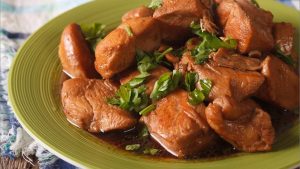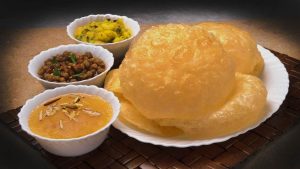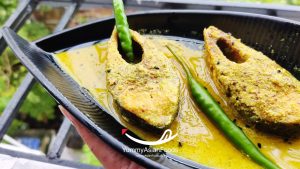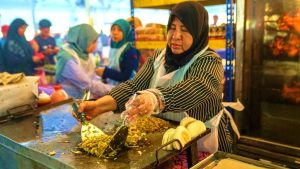Table of Contents
ToggleMongolian buuz (steamed meat dumplings) are steamed dumplings that are a staple of authentic Mongolian cuisine. This traditional dish is easy to make and can be customized with various recipe variations. In this blog post, we will walk through four simple steps to cook Mongolian buuz at home, allowing you to enjoy this delicious dish with ease.
1. Gather the Ingredients
To make authentic Mongolian buuz, you will need a few key ingredients for both the dough and the filling. For the dough, you will need all-purpose flour, water, and a pinch of salt. The filling typically consists of ground meat, such as beef or lamb, along with finely chopped onions, garlic, and various seasonings. For those looking to add some authentic Mongolian flavor, consider using traditional Mongolian spices like cumin and coriander in the filling. Additionally, some variations of Mongolian steamed meat dumplings might include ingredients like finely chopped cabbage or carrots in the filling to add a unique twist to the traditional recipe.
When it comes to finding authentic Mongolian ingredients for your Mongolian buuz, consider visiting local Asian or international grocery stores. These specialty markets often carry a wide range of authentic Mongolian ingredients, including spices, sauces, and specialty flours that are essential for achieving an authentic taste. You can also explore online retailers that specialize in Asian or Mongolian ingredients, as they may offer a wider selection of authentic products. By sourcing your ingredients from these specialty stores, you can ensure that your steamed meat dumplings will be filled with the true flavors of Mongolia.

2. Prepare the Filling and Dough
To prepare the filling for Mongolian buuz, start by finely chopping onions, garlic, and ginger. In a large mixing bowl, combine the chopped vegetables with ground meat, such as beef or lamb, and season with salt, pepper, and a touch of soy sauce for an authentic Mongolian flavor. For a vegetarian twist on buuz, you can substitute the meat with a mixture of finely diced mushrooms, carrots, and cabbage seasoned with soy sauce and sesame oil. The filling should have a well-balanced blend of flavors and textures to complement the light and fluffy dough of the Mongolian buuz.
When making the dough for steamed meat dumplings, sift together flour, salt, and a pinch of baking powder in a large mixing bowl. Slowly add warm water to the dry ingredients, kneading the mixture until a smooth and elastic dough forms. For a creative twist, consider using whole wheat flour or adding a hint of turmeric or paprika to the dough for a colorful variation of Mongolian buuz. Additionally, you can experiment with alternative fillings such as spiced minced chicken or a medley of sautéed vegetables to customize the traditional Mongolian buuz recipe to your liking.

3. Assemble and Steam the Buuz
To assemble Mongolian buuz, start by rolling out the dough into small circles. Place a spoonful of the filling, typically made with minced meat, onions, and spices, in the center of each circle. Then, fold the edges of the dough together, pleating and pinching to create a closed, purse-like shape. This traditional method of shaping Mongolian buuz not only ensures that the filling is securely enclosed, but also creates an attractive presentation. The next step is to steam the assembled buuz. To do this, arrange the buuz in a steamer basket, making sure to leave some space between them to prevent sticking. Steam the buuz for about 20-25 minutes, or until the dough becomes translucent and the filling is thoroughly cooked. This steaming process is crucial for achieving the desired texture and flavor of steamed meat dumplings, as it allows the dough to cook while keeping the filling moist and flavorful.
When steaming Mongolian buuz, it’s important to ensure that they are cooked thoroughly while maintaining their traditional taste. To achieve this, make sure to check that the buuz are fully cooked by testing the dough and filling for doneness. The dough should be soft and slightly translucent, indicating that it is thoroughly steamed. Additionally, the filling should be hot and fully cooked, with the meat tender and flavorful. To maintain the traditional taste of buuz, consider using authentic spices and seasonings, such as garlic, cumin, and black pepper, to enhance the flavor of the filling. These aromatic ingredients are essential for achieving the characteristic taste of steamed meat dumplings and are integral to the overall dining experience. By following these tips for assembling and steaming Mongolian buuz, you can ensure that they are cooked to perfection while preserving their authentic flavor and appeal.
4. Serve and Enjoy
When serving the cooked Mongolian buuz, it’s traditional to present them on a decorative platter or in a beautiful serving dish to enhance their visual appeal. To complement the flavors of the Mongolian buuz, consider offering traditional condiments such as soy sauce, vinegar, and chili oil for dipping. Additionally, serving the steamed meat dumplings with a side of steamed vegetables or a fresh salad can balance out the richness of the dumplings and provide a well-rounded dining experience.
Incorporating the Mongolian steamed meat dumplings into a complete Mongolian meal can create an authentic dining experience. Consider starting the meal with a warm and comforting bowl of Mongolian noodle soup, followed by the main course of the flavorful buuz. Accompany the buuz with a side of traditional Mongolian rice and perhaps some pickled vegetables for added texture and contrast. Finish off the meal with a refreshing serving of Mongolian milk tea or a sweet dessert to complete the authentic dining experience.

The Difference Between Chinese and Mongolian Buuz Meat Dumplings
If you’ve ever compared Chinese and Mongolian Buuz meat dumplings, the differences lie not only in their taste but also in their cultural significance. Chinese dumplings often feature a thin dough wrapper filled with minced meat and vegetables, offering a delicate and slightly sweet flavor profile. On the other hand, Mongolian Buuz boasts a thicker dough casing that is more robust, typically filled with a heartier mixture of seasoned meat such as lamb or beef.
The cooking methods for these two types of dumplings also vary significantly. While Chinese dumplings are commonly steamed or fried to achieve a tender texture, Buuz is traditionally boiled or steam-cooked, resulting in a juicy and succulent interior locked within its sturdy outer shell. This distinction reflects the diverse culinary practices embraced by each culture and highlights the unique ways in which these comfort foods have evolved over time.
Conclusion: How to Cook Mongolian Buuz
Cooking Mongolian buuz at home is a simple and rewarding process that allows you to savor the flavors of authentic Mongolian cuisine. With these easy steps and optional recipe variations, you can create steamed Mongolian dumplings that are both delicious and personalized to your taste preferences. Whether you’re a fan of traditional dishes or looking to explore new culinary adventures, mastering the art of making buuz will surely elevate your dining experience.















